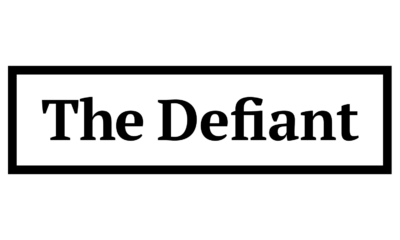News
Il a enseigné au MIT, travaillé chez Morgan Stanley et a convaincu Bill Ackman et Galaxy de soutenir son fonds cryptographique de 200 millions de dollars au début de la trentaine. Son avenir est désormais menacé

Lorsque Yida Gao est revenue au MIT en 2022, l’ancien sauteur à la perche universitaire et lauréat de Phi Beta Kappa avait de grandes chaussures à remplir. La prestigieuse université lui avait demandé d’enseigner un cours d’études supérieures à l’école de commerce sur la cryptographie et la finance, un poste récemment libéré par le président de la Securities and Exchange Commission, Gary Gensler.
À seulement dix ans de ses études de premier cycle au MIT, Gao était intrépide. L’immigrant chinois occupait une place importante dans le monde de la cryptographie après avoir atterri sur la liste Forbes des 30 moins de 30 ans, et il avait sa propre société de capital-risque axée sur la blockchain, Shima Capital. En peu de temps, Gao a levé 200 millions de dollars auprès de poids lourds de la finance comme Bill Ackman et de sociétés de cryptographie de premier plan, notamment Dragonfly et Galaxy, devenant rapidement l’un des investisseurs les plus actifs dans le domaine de la cryptographie en participant à plus de 300 transactions.
L’ascension de Gao fut fulgurante. Mais il a également pris des raccourcis cruciaux. Une enquête de Fortune a révélé qu’à l’insu d’Ackman et de ses autres investisseurs, Gao avait créé une entité offshore secrète et canalisé les actifs appartenant à son fonds de risque vers la société créée sous son propre nom. “C’est directement contraire à ce que vous êtes autorisé à faire en vertu du [Investment] Advisers Act », a déclaré Eric Hess, un avocat spécialisé dans les actifs numériques et le capital-risque.
Gao n’a encore été accusé d’aucun crime, et un représentant de Shima Capital a déclaré à Fortune que la société ne commentait pas « des questions réglementaires comme celle-ci ». Mais ses mauvaises performances et son comportement, qui semblent violer les règles de protection des investisseurs de la SEC, ont laissé l’étoile montante de la scène cryptographique avoir du mal à lever des capitaux supplémentaires, selon une source. Et malgré un marché en plein essor, un représentant de Shima a déclaré à Fortune que l’entreprise ne levait actuellement pas de fonds.
L’entreprise de Gao a également connu un exode d’employés de haut niveau ces derniers mois, notamment le directeur de la technologie Carl Hua et le directeur de la recherche Alexander Lin, qui sont partis créer leur propre société de capital-risque au début de cette année, ainsi que le chef de cabinet et responsable de la plateforme Hazel. Chen. Les dirigeants partis n’ont pas répondu à une demande de commentaires.
Pendant ce temps, Shima semble patauger malgré le marché haussier actuel de la cryptographie. Son dépôt le plus récent auprès de la SEC répertorie des actifs sous gestion d’environ 158 millions de dollars, un chiffre inférieur aux 200 millions de dollars levés par Shima en 2022, bien que la mesure ne suive pas directement la performance d’un fonds.
Bien que les malversations des entreprises puissent être aussi courantes dans le domaine de la cryptographie que les Lamborghinis saisies, Gao a quand même réussi à convaincre une élite d’investisseurs de le soutenir et continue d’être actif dans le domaine. Ses faux pas alimenteront probablement les critiques du secteur qui dénoncent depuis longtemps son penchant pour les comportements glissants.
L’histoire continue
“Dans la cryptographie, il y a beaucoup de douceur sur les bords, parfois beaucoup de ‘Faites-moi confiance, mon frère'”, a déclaré Hess. “Nous devons commencer à prêter attention à ces normes et ne pas faire semblant d’être les enfants abandonnés du système financier.”
Le jeu de coquille
Dernier d’une série de prodiges de la cryptographie à avoir fait irruption sur la scène, Gao a emprunté une voie plus traditionnelle : rasé de près, tonique et vantant un curriculum vitae impressionnant d’institutions de premier ordre. Il a débuté sa carrière financière chez Morgan Stanley faire des fusions et acquisitions. Pendant son temps libre, il investissait dans des startups, collaborant souvent avec un collègue entrepreneur bien connecté nommé Adam Struck. Gao a travaillé chez le géant du capital-risque New Enterprise Associates et s’est brièvement inscrit à l’école de commerce de Stanford avant d’abandonner ses études pour rejoindre à plein temps la société de capital-risque de Struck à Santa Monica.
Alors que le partenariat entre Gao et Struck semblait prospérer en public, la relation est devenue acrimonieuse à huis clos en 2019. Struck a intenté une action en justice, alléguant que Gao avait secrètement volé des informations exclusives et créé une société de capital-risque rivale, Shima Capital, constituée à Puerto. Rico. Gao a nié ces affirmations, arguant que Struck avait « minimisé » ses contributions et refusé de reconnaître leur partenariat 50/50, ce qui l’avait amené à se lancer seul.
Struck n’a pas répondu à une demande de commentaires sur le différend juridique, qui a été réglé en octobre 2023.
Bien que l’accord reste sous scellés, les avocats de Struck accusent Gao dans les dossiers judiciaires d’avoir mis en place un « jeu de façade » de sociétés, y compris une entité des îles Vierges britanniques appelée ShimaB, entièrement détenue par Gao.
Alors même qu’il s’affrontait avec Struck, Gao s’est appuyé sur son curriculum vitae étincelant et son attitude confiante pour persuader les plus grands noms de la cryptographie et de la finance, dont Bill Ackman et l’ancien candidat à la présidentielle Andrew Yang, de lui faire des chèques. Selon un calendrier d’investissements consulté par Fortune, Shima a commencé à participer à des transactions en mai 2021, avec environ 100 millions de dollars investis dans environ 200 projets d’ici septembre 2022. Cependant, tout le monde n’a pas été impressionné par le charme enfantin de Gao.
Plusieurs investisseurs, bailleurs de fonds potentiels et sociétés de portefeuille potentielles ont décrit Gao et son équipe à Fortune comme étant jeunes et inexpérimentés qui ne savaient pas vraiment ce qu’ils faisaient mais qui ont néanmoins surfé sur la vague crypto. L’un d’entre eux, qui s’est exprimé sous couvert d’anonymat, a déclaré que Gao appartenait à une catégorie d’investisseurs blockchain qui ont une approche plus rapide et plus souple, ce qui peut être un pari attrayant pour les bailleurs de fonds. « Vous achetez le risque que vous essayez de capturer », ont-ils déclaré.
Les inconvénients des paris sur Gao sont rapidement apparus. Plus particulièrement, les investisseurs se sont inquiétés de la façon dont son entreprise évaluait ses investissements, des personnes familières ayant déclaré à Fortune que Gao majorerait les avoirs de Shima sur la base de ses propres estimations – une pratique peu orthodoxe dénoncée dans un rapport de 2023. article du Financial Times. Gao a répondu en promettant que Shima demanderait bientôt à des administrateurs de fonds professionnels de superviser la comptabilité.
Dans un autre exemple de comptabilité douteuse, Shima a évalué son investissement dans l’échange crypto Chatex à 250 000 $ dans un document consulté par Fortune daté de septembre 2022, malgré le fait que le département du Trésor américain avait sanctionné l’entreprise près d’un an plus tôt pour avoir facilité des activités illicites telles que les ransomwares et les marchés darknet. Un représentant de Shima a déclaré à Fortune que la société a finalement annulé l’investissement d’ici le quatrième trimestre 2022, bien que les fonds restent en attente en attendant la résolution des sanctions de la société, « par souci de prudence ».
Et malgré la promesse de Gao de trouver un auditeur, Shima a eu du mal à en embaucher un, deux cabinets comptables de premier plan l’ayant refusé parce que Shima ne correspondait pas à leurs paramètres de risque. Le bloc signalé en juillet 2023.
Un dossier déposé auprès de la SEC d’avril 2024 répertorie une société basée aux Caïmans appelée MHA Cayman comme auditeur de Shima, et un représentant de Shima a confirmé que MHA a terminé l’audit 2023 de Shima en mai 2024. MHA n’a pas répondu aux multiples demandes de commentaires de Fortune.
“Cela n’a aucun sens”
Sur le papier, Gao avait proposé aux investisseurs une offre standard. Il prendrait leur argent et soutiendrait les entreprises blockchain en phase de démarrage, offrant ainsi une exposition et des perspectives époustouflantes au secteur en effervescence.
Mais les difficultés rencontrées par Shima pour trouver un auditeur étaient inhabituelles pour une société de capital-risque américaine. Il en était de même pour l’existence de la société étrangère ShimaB, propriété exclusive de Gao. Alors que de nombreuses sociétés américaines de capital-risque de crypto-monnaie ont créé des entités offshore en réponse à un environnement réglementaire incertain dans leur pays, ces entités appartiennent à l’entreprise et non à la personne qui la dirige.
Gao a partagé un document de « structure de fonds » avec des investisseurs potentiels qui décrivait un réseau de sociétés à responsabilité limitée appartenant à Shima qui détiendraient le capital des investisseurs et réaliseraient des investissements, dont plusieurs sont enregistrées aux îles Caïmans.
Mais d’autres documents internes consultés par Fortune racontent une histoire différente. L’entité ShimaB, que Gao avait créée en son nom alors qu’il travaillait encore avec Struck, n’apparaissait pas du tout dans le document de structure du fonds de Gao, ni dans un prospectus partagé avec les investisseurs.
Pendant ce temps, d’autres documents internes décrivant les avoirs de Shima révèlent que plus de 100 investissements datant de mi-2021 à fin 2022 – après que Shima a annoncé sa levée de fonds de 200 millions de dollars – appartenaient à ShimaB, propriété de Gao.
Bien qu’il n’y ait aucune preuve que Gao ait mis en place ce dispositif visant à détourner des actifs, les experts estiment que cette structure semble constituer une violation grave des règles relatives aux conflits d’intérêts énoncées dans la loi sur les conseillers en investissement, une loi qui énonce les obligations éthiques des sociétés de capital-risque envers les sociétés de capital-risque. leurs investisseurs. Dans le cas de ShimaB, la loi semble interdire à Gao d’utiliser le capital d’un investisseur pour investir dans une entité dont il est légalement propriétaire sans divulgation appropriée.
La raison, outre la transparence élémentaire, est que si quelque chose devait arriver à Gao, comme une mort subite ou une faillite, la propriété des investissements pourrait être contestée. “Cela n’a aucun sens”, a déclaré Hess, l’avocat du capital-risque et de la blockchain. “Je ne pense pas que ce soit une stratégie défendable.”
drapeaux rouges
Fin 2022, les investisseurs de Shima ont commencé à découvrir l’existence de la structure de propriété, ainsi que les disparités de valorisation, ce qui les a amenés à tirer la sonnette d’alarme auprès de la direction de Shima. Galaxy a pu racheter son investissement. D’autres qui avaient réalisé un petit investissement, notamment le family office de Bill Ackman et Dragonfly, sont restés largement en dehors du conflit. Ceux qui connaissent la situation ont suggéré que cela était dû au fait que leurs investissements étaient relativement modestes. (Les représentants de Galaxy, Ackman et Dragonfly ont refusé de commenter.)
En mars 2023, Gao a cherché à apaiser les inquiétudes en rencontrant le petit comité consultatif de Shima et en révélant que l’entreprise avait réalisé des investissements « en entrepôt » en utilisant ShimaB, un terme qui décrit les accords de stationnement conclus avant la fin d’un cycle d’investissement complet.
Selon le procès-verbal de la réunion, Shima a affirmé avoir réalisé les investissements en utilisant le capital des investisseurs, mais qu’elle avait toujours eu l’intention de les transférer à l’entreprise. En réponse à une liste de questions de Fortune, un représentant de Shima a répété que la société avait entreposé des investissements via des entités « affiliées », dont ShimaB, et avait transféré les investissements vers les nouveaux fonds de Shima.
Cependant, le procès-verbal et les réponses du représentant n’incluent aucune indication selon laquelle la société aurait jamais divulgué l’accord ShimaB à ses investisseurs, ni que Gao déplaçait leurs fonds en son propre nom plutôt que par l’intermédiaire de Shima. De plus, en raison des restrictions d’affectation pour de nombreux investissements, il n’est pas clair si Shima serait même en mesure de retransférer tous les investissements à l’entreprise.
Au-delà du mécontentement des investisseurs, les problèmes de conformité de Shima pourraient également avoir des conséquences juridiques pour Gao et son entreprise. Selon l’avocat Hess, les violations apparentes des conflits d’intérêts pourraient créer de nombreux problèmes avec la SEC si Shima ne révélait pas les arrangements douteux lors des examens. Il a ajouté que les sanctions pourraient aller d’amendes jusqu’à la perte par Shima de son statut de conseiller en investisseurs, bien qu’il ne pense pas que cela puisse atteindre le niveau de fraude.
Malgré ses antécédents ignominieux, Shima continue de participer activement aux transactions. Les investisseurs reviennent vers la cryptographie, avec des memecoins comme le populaire Dogwifhat. ralliement Parallèlement aux victoires réglementaires aux États-Unis, en avril, Shima a été répertorié comme investisseur dans un cycle de jetons pour la nouvelle blockchain d’une autre pièce sur le thème du chien, Shiba Inu.
Gao n’est peut-être pas une anomalie en matière de cryptographie. Néanmoins, pour une industrie qui tente de se débarrasser de sa réputation indisciplinée, il constitue un avertissement pour les investisseurs qui cherchent à éviter les trébuchements du dernier cycle haussier.
Cette histoire a été initialement présentée sur Fortune.com
News
Bitcoin soars above $63,000 as money flows into new US investment products

Bitcoin has surpassed the $63,000 mark for the first time since November 2021. (Chesnot via Getty Images)
Bitcoin has broken above the $63,000 (£49,745) mark for the first time since November 2021, when the digital asset hit its all-time high of over $68,000.
Over the past 24 hours, the value of the largest digital asset by market capitalization has increased by more than 8% to trade at $63,108, at the time of writing.
Learn more: Live Cryptocurrency Prices
The price appreciation was fueled by record inflows into several U.S.-based bitcoin cash exchange-traded funds (ETFs), which were approved in January this year.
A Bitcoin spot ETF is a financial product that investors believe will pave the way for an influx of traditional capital into the cryptocurrency market. Currently, indications are favorable, with fund managers such as BlackRock (BLK) and Franklin Templeton (BEN), after allocating a record $673 million into spot Bitcoin ETFs on Wednesday.
Learn more: Bitcoin’s Success With SEC Fuels Expectations for an Ether Spot ETF
The record allocation surpassed the funds’ first day of launch, when inflows totaled $655 million. BlackRock’s iShares Bitcoin Trust ETF (I BITE) alone attracted a record $612 million yesterday.
Bitcoin Price Prediction
Earlier this week, veteran investor Peter Brandt said that bitcoin could peak at $200,000 by September 2025. “With the push above the upper boundary of the 15-month channel, the target for the current market bull cycle, which is expected to end in August/September 2025, is raised from $120,000 to $200,000,” Brandt said. published on X.
The influx of capital from the traditional financial sphere into Bitcoin spot ETFs is acting as a major price catalyst for the digital asset, but it is not the only one. The consensus among analysts is that the upcoming “bitcoin halving” could continue to drive flows into the bitcoin market.
The Bitcoin halving is an event that occurs roughly every four years and is expected to happen again next April. The halving will reduce the bitcoin reward that miners receive for validating blocks on the blockchain from 6.25 BTC to 3.125 BTC. This could lead to a supply crunch for the digital asset, which could lead to price appreciation.
The story continues
Watch: Bitcoin ETFs set to attract funds from US pension plans, says Standard Chartered analyst | Future Focus
Download the Yahoo Finance app, available for Apple And Android.
News
FRA Strengthens Cryptocurrency Practice with New Director Thomas Hyun

Forensic Risk Alliance (FRA), an independent consultancy specializing in regulatory investigations, compliance and litigation, has welcomed U.S.-based cryptocurrency specialist Thomas Hyun as a director of the firm’s global cryptocurrency investigations and compliance practice. Hyun brings to the firm years of experience building and leading anti-money laundering (AML) compliance programs, including emerging payment technologies in the blockchain and digital asset ecosystem.
Hyun has nearly 15 years of experience as a compliance officer. Prior to joining FRA, he served as Director of AML and Blockchain Strategy at PayPal for four years. He established PayPal’s financial crime policy and control framework for its cryptocurrency-related products, including PayPal’s first consumer-facing cryptocurrency offering on PayPal and Venmo, as well as PayPal’s branded stablecoin.
At PayPal, Hyun oversaw the second-line AML program for the cryptocurrency business. His responsibilities included drafting financial crime policies supporting the cryptocurrency business, establishing governance and escalation processes for high-risk partners, providing credible challenge and oversight of front-line program areas, and reporting to the Board and associated authorized committees on program performance.
Prior to joining PayPal, Hyun served as Chief Compliance Officer and Bank Secrecy Officer (BSA) at Paxos, a global blockchain infrastructure company. At Paxos, he was responsible for implementing the compliance program, including anti-money laundering and sanctions, around the company’s digital asset exchange and its asset-backed tokens and stablecoins. He also supported the company’s regulatory engagement efforts, securing regulatory approvals, supporting regulatory reviews, and ensuring compliance with relevant digital asset requirements and guidelines.
Thomas brings additional experience in payments and financial crime compliance (FCC), having previously served as Vice President of Compliance at Mastercard, where he was responsible for compliance for its consumer products portfolio. He also spent more than seven years in EY’s forensics practice, working on various FCC investigations for U.S. and foreign financial institutions.
Hyun is a Certified Anti-Money Laundering Specialist (CAMS) and a Certified Fraud Examiner (CFE). He is a graduate of New York University’s Stern School of Business, where he earned a bachelor’s degree in finance and accounting. Additionally, he serves on the board of directors for the Central Ohio Association of Certified Anti-Money Laundering Specialists (ACAMS) chapter.
Commenting on his appointment, Hyun said, “With my experience overseeing and implementing effective compliance programs at various levels of maturity and growth, whether in a startup environment or large enterprises, I am excited to help our clients overcome similar obstacles and challenges to improve their financial crime compliance programs. I am excited to join FRA and leverage my experience to help clients navigate the complexities of AML compliance and financial crime prevention in this dynamic space.”
FRA Partner, Roy Pollittadded: “As the FRA’s sponsor partner for our growing Cryptocurrency Investigations and Compliance practice, I am thrilled to have Thomas join our ever-expanding team. The rapid evolution of blockchain and digital asset technologies presents both exciting opportunities and significant compliance challenges. Hiring Thomas in a leadership role underscores our commitment to staying at the forefront of the industry by enhancing our expertise in anti-money laundering and blockchain strategy.”
“Thomas’ extensive background in financial crime compliance and proven track record of building risk-based FCC programs in the blockchain and digital asset space will be invaluable as we continue to provide our clients with the highest level of service and innovative solutions.”
“FRA strengthens cryptocurrency practice with new director Thomas Hyun” was originally created and published by International Accounting Bulletina brand owned by GlobalData.
The information on this website has been included in good faith for general information purposes only. It is not intended to amount to advice on which you should rely, and we make no representations, warranties or assurances, express or implied, as to its accuracy or completeness. You must obtain professional or specialist advice before taking, or refraining from, any action on the basis of the content on our website.
News
Bitcoin trades around $57,000, crypto market drops 6% ahead of Fed decision

-
Bitcoin fell in line with the broader cryptocurrency market, with ether and other altcoins also falling.
-
Financial markets were weighed down by risk-off sentiment ahead of the Fed’s interest rate decision and press conference later in the day.
-
10x Research said it is targeting a price target of $52,000 to $55,000, anticipating further selling pressure.
Bitcoin {{BTC}} was trading around $57,700 during European morning trading on Wednesday after falling to its lowest level since late February, as the world’s largest cryptocurrency recorded its worst month since November 2022.
BTC has fallen about 6.3% over the past 24 hours, after breaking below the $60,000 support level late Tuesday, according to data from CoinDesk. The broader crypto market, as measured by the CoinDesk 20 Index (CD20), lost nearly 9% before recovering part of its decline.
Cryptocurrencies have been hurt by risk-off sentiment in broader financial markets amid stagflation in the United States, following indications of slowing growth and persistent inflation that have dampened hopes of an interest rate cut by the Federal Reserve. The Federal Open Market Committee is due to deliver its latest rate decision later in the day.
Ether {{ETH}} fell about 5%, dropping below $3,000, while dogecoin {{DOGE}} led the decline among other major altcoins with a 9% drop. Solana {{SOL}} and Avalanche {{AVAX}} both lost about 6%.
Bitcoin plunged in April, posting its first monthly loss since August. The 16% drop is the worst since November 2022, when cryptocurrency exchange FTX imploded, but some analysts are warning of further declines in the immediate future.
10x Research, a digital asset research firm, said it sees selling pressure toward the $52,000 level due to outflows from U.S. cash exchange-traded funds, which have totaled $540 million since the Bitcoin halving on April 20. It estimates that the average entry price for U.S. Bitcoin ETF holders is $57,300, so this could prove to be a key support level.
The closer the bitcoin spot price is to this average entry price, the greater the likelihood of a new ETF unwind, 10x CEO Markus Thielen wrote Wednesday.
“There may have been a lot of ‘TradeFi’ tourists in crypto – pushing longs all the way to the halving – that period is now over,” he wrote. “We expect more unwinding as the average Bitcoin ETF buyer will be underwater when Bitcoin trades below $57,300. This will likely push prices down to our target levels and cause a -25% to -29% correction from the $73,000 high – hence our $52,000/$55,000 price target over the past three weeks.”
The story continues
UPDATE (May 1, 8:56 UTC): Price updates throughout the process.
UPDATE (May 1, 9:57 UTC): Price updates throughout the process.
UPDATE (May 1, 11:05 UTC): Adds analysis from 10x.
News
The Cryptocurrency Industry Is Getting Back on Its Feet, for Better or Worse

Hello from Austin, where thousands of crypto enthusiasts braved storms and scorching heat to attend Consensus. The industry’s largest and longest-running conference, which can sometimes feel like a religious revival, offers opportunities to chat and listen to leading names in crypto. And for the casual observer, Consensus offers a useful glimpse into the mood of an industry prone to wild swings in fortune.
Unsurprisingly, the mood is noticeably more positive than it was a year ago, when crowds were sparse and many attendees were quietly confiding that they were considering switching to AI. In practice, that means some of the more obnoxious elements are back, but not to the level of Consensus 2018 in New York, when charlatans parked Lamborghinis outside the event and the hallways were lined with booth girls and scammers pitching “ICOs in a box.”
This time around, Elon Musk’s Cybertrucks have replaced Lamborghinis as the vehicle of choice for marketers. One of the most notable publicity stunts was a startup that paid a poor guy to parade around in the Texas sun in a Jamie Dimon costume, wig, and mask, and then staged a mock assault on him by memecoin characters.
Outside the event was a giant “RFK for President” truck, while campaign staffers manned a booth instead — a reflection of both the election year and crypto’s willingness to latch onto any candidate, no matter how outlandish, who will talk about the industry. RFK himself is scheduled to address the conference on Thursday.
Excesses aside, the general sense of optimism was understandable. The cryptocurrency market has not only recovered from the wave of fraud that nearly sank it in 2022, it is riding a new wave of political legitimacy. This month, cryptocurrencies scored once-unthinkable political victories in Washington, D.C., and there is a sense that the industry has not only withstood the relentless regulatory assaults of SEC Chairman Gary Gensler and Sen. Elizabeth Warren, but is poised to defeat them.
And while cryptocurrency is still searching for its flagship application, the optimists I spoke with pointed to signs that it is (once again) upon us. Those signs include the rapid advancement of zero-knowledge proofs as well as the popularity of Coinbase’s Base blockchain and, perhaps most importantly, the large-scale arrival of traditional finance into the world of cryptocurrencies – a development that not only provides a major financial boost, but also a new element of stability and maturity that will, perhaps, tame the worst of crypto’s wilder side. Finally, this consensus marked the end of the Austin era as the conference, under new leadership, will be held in Toronto and Hong Kong in 2025.
The story continues
Jeff John Roberts
jeff.roberts@fortune.com
@jeffjohnroberts
This story was originally featured on Fortune.com
-

 News12 months ago
News12 months agoBitcoin soars above $63,000 as money flows into new US investment products
-

 DeFi12 months ago
DeFi12 months agoEthena downplays danger of letting traders use USDe to back risky bets – DL News
-

 News12 months ago
News12 months agoFRA Strengthens Cryptocurrency Practice with New Director Thomas Hyun
-

 DeFi12 months ago
DeFi12 months agoZodialtd.com to revolutionize derivatives trading with WEB3 technology
-

 Markets12 months ago
Markets12 months agoBitcoin Fails to Recover from Dovish FOMC Meeting: Why?
-

 DeFi1 year ago
DeFi1 year ago👀 Lido prepares its response to the recovery boom
-

 Markets1 year ago
Markets1 year agoWhale Investments in Bitcoin Reached $100 Billion in 2024, Fueling Crazy Investor Optimism ⋆ ZyCrypto
-

 Markets1 year ago
Markets1 year agoWhy Bitcoin’s price of $100,000 could be closer than ever ⋆ ZyCrypto
-

 DeFi1 year ago
DeFi1 year agoPancakeSwap integrates Zyfi for transparent, gas-free DeFi
-

 Markets1 year ago
Markets1 year agoWhales are targeting these altcoins to make major gains during the bull market 🐋💸
-

 DeFi1 year ago
DeFi1 year ago🏴☠️ Pump.Fun operated by Insider Exploit
-

 News1 year ago
News1 year agoHow to make $1 million with crypto in just 1 year 💸📈













